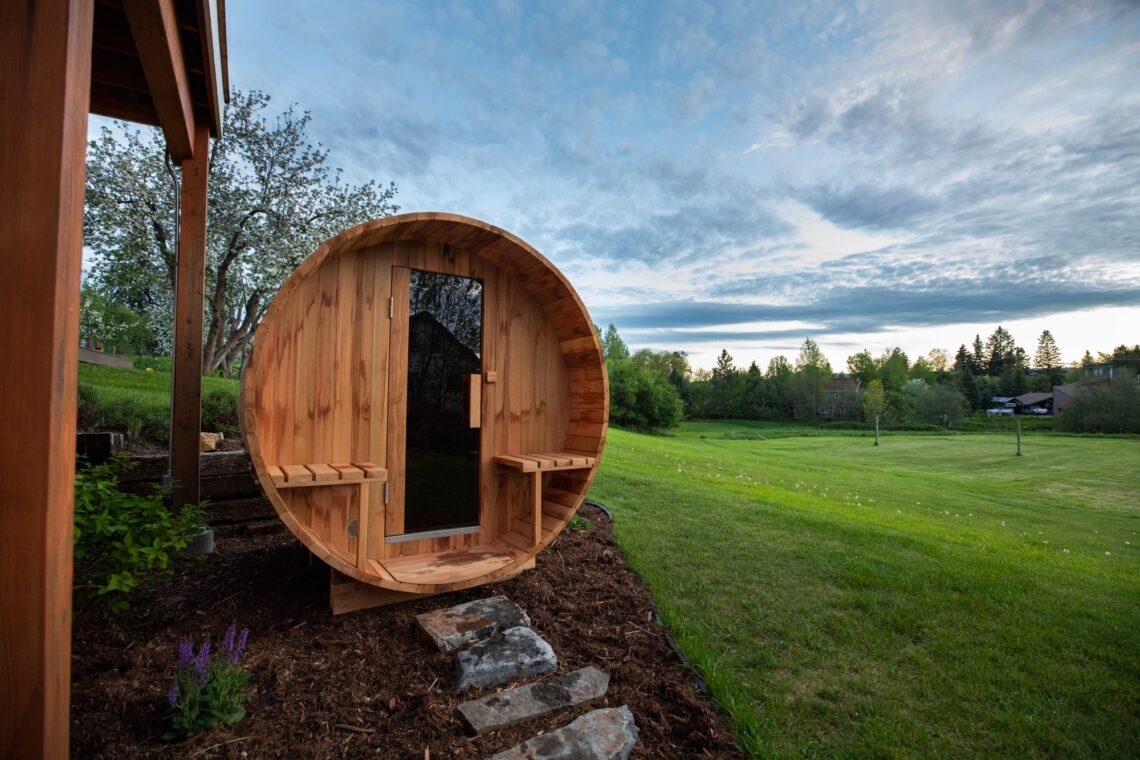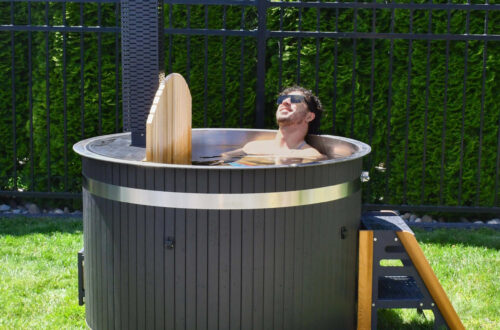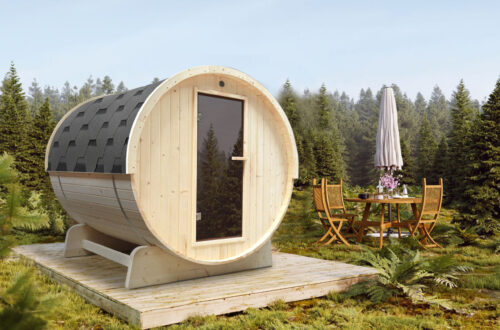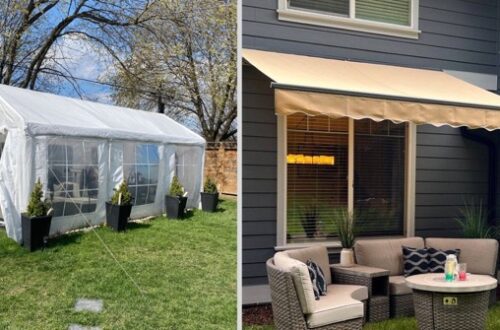Remember those first spring moments, when your shoulders lower and relax under a new, warm sun? Using a regular sauna can have a similar whole-body effect. Communities and individuals around the world have been reaping the benefits of this engineered heat hug for generations.
Knowing when to use a sauna and how best to maximize the system’s benefits is a task that requires an intimate understanding of your body’s limits and needs.
We’ve compiled this comprehensive guide to help you sift through all the variations of this ancient practice and global phenomenon. Wind down and read on to discover top expert-recommended methods for sauna use to perfect a routine tailored to your health goals.
What Is The Right Procedure For Using A Sauna?
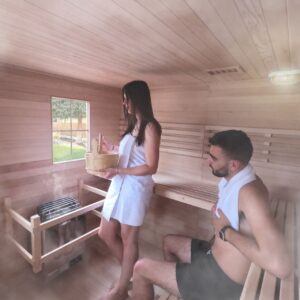
A traditional sauna is a closed room or space filled with heat to help warm the body and support overall health and wellness.
Think of a sauna as a safe space. Their secluded and often simple builds function as meditative spaces for many across climates, cultures, and seasons. Ultimately how you choose to use your sauna time is a personal choice that should prioritize your physical and emotional well-being.
Lounge in the sauna and focus on your breath during a post-lemon-water morning ritual. Carry along a pen and paper and reflect on the day while you sweat out any latent Monday evening stress. Take a mid-day break from the kids and write your grocery list enrobed in silent heat.
If you’re using a public, shared space, make sure to read through provided instructions. Sitting, standing, and lying down are generally permitted. You may prefer to take advantage of the heat to loosen muscles by stretching or massaging sore areas.
Sauna Safety
While there are significant advantages to sauna use, it’s important to take precautions to protect your body under thermal stress, especially when it comes to the sauna temperature. Harvard Medical School indicates that saunas, which can soar to 120 degrees Fahrenheit, cause the pulse to jump an average of 30%, doubling the amount of blood circulating through your system.
As such, health professionals recommend taking the following actions before and during your time in a sauna:
- Avoid alcohol and medications – Alcohol is a diuretic, meaning it encourages your body to remove fluids from the blood, leaving you at high risk for dehydration. Medications can also affect sweat and heat-regulating mechanisms.
- Drink water – Experts recommend drinking two to four glasses of water before and after sauna sessions to store up and replenish fluid loss.
- Cool down or warm up – Avoid health risks associated with quick, dramatic changes in your body’s blood circulation by slowly acclimating to a new temperature before sauna use, especially in extreme temperature zones. For example, you can warm up inside after a cold winter run before a sauna session.
- Leave if you feel unwell – Know your body and monitor yourself for signs of heat stress and symptoms of exhaustion like dizziness, short breath, muscle cramping, fatigue, and disassociation.
- Avoid vigorous movement – Increasing your heart rate in the presence of extreme heat can be dangerous and leave you at risk for heat stress and exhaustion, fainting, or heat stroke.

How Often Should I Use A Sauna?
Developing a regular sauna bathing routine is a personal process, and optimal use can depend on your goals and underlying medical concerns. But when is the best time to use a sauna? You can use a sauna at any time of the day and during any season.
Some take sauna baths in the morning to promote wakefulness and circulation, while others opt for bedtime sessions to soothe the muscles and support relaxation. They’re also fantastic in the colder months if you’re looking to warm your body from the chilly temperatures.
Additionally, studies indicate there is a linear correlation between a sauna’s health benefits, particularly on heart health and frequency of use.
Cell biologist and biomedical scientist Dr. Rhonda Patrick notes, “People that use the sauna two to three times a week are 22% less likely to die from sudden cardiac arrest compared to those who only use the sauna one time a week. But people that use the sauna four to seven times per week are 63% less likely to die from cardiac arrest.”
The Sauna Society indicates that, on average, people use saunas two to three times a week. Harvard Medical School recommends sauna use for no more than 15 to 20 minutes at a time. And in some instances, individuals may consider three to four intervals of 15 to 20 minutes with five-minute breaks.
Make sure you know how to clean a sauna to help keep your unit fresh and sanitary for every use.
Who Should Use a Sauna?
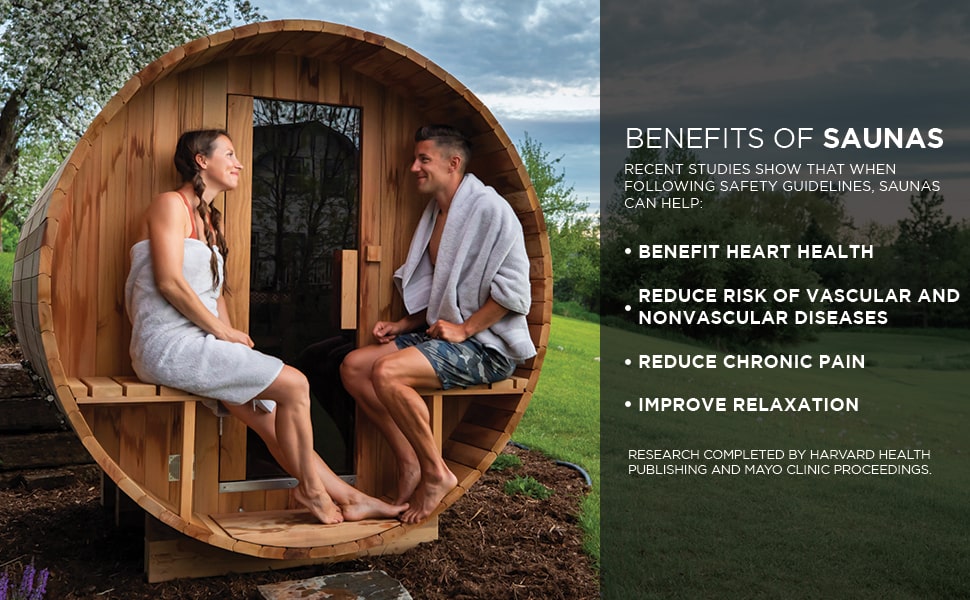
Dr. Rhonda Patrick notes that any healthy individual can benefit from sauna therapy. However, those with pre-existing medical concerns like heart disease, high blood pressure, or pregnancy and those taking particular medications should consult a medical professional before using a sauna.
While children may use saunas, it’s not recommended until they reach the age of seven or eight. The CDC indicates that those up to four years of age have a limited ability to regulate body temperature, and children should be carefully monitored before, during, and after use.
Dr. Patrick confirms that your blood pressure and resting heart rate are lower after sauna use. And Harvard Medical School and Physical Therapy Central suggest that individuals may experience several positive health implications after sauna use, including:
- Lower blood pressure
- Congestion relief
- Cognitive clarity
- Improved workout recovery
That said, saunas are particularly beneficial to the following groups:
- Athletes – Regulating internal temperature is essential to high athletic performance. Many athletes use saunas following workouts to improve recovery time, enhance the circulation of oxygen and nutrients, and help repair damaged muscles. Heat can also increase range of motion.
- Less active individuals – The physical responses to sauna sessions often mimic that of moderate to vigorous cardio-aerobic exercise. This phenomenon means those with limited mobility can reap the circulatory and healing rewards of a healthy sweat session.
- Older individuals – As we age, our cells tend to become less structured as proteins lose their structure (think wrinkles!). High heat, like that of a sauna, works to activate heat shock proteins, a stress response protein that supports cell structure. A 2017 study also found these proteins to be key preventers of a host of neurodegenerative diseases.
Types of Saunas
There are various methods used for heating the sauna, developed by multiple cultures around the world. Each method is classified as a particular sauna type.
Four popular types include:
- Wood-burning sauna – In this sauna type, burning wood continually heats the sauna rocks. Ventilation directs smoke out of the room while the rocks retain the heat to spread warmth throughout the room.
- Electrically heated sauna – The North American Sauna Society lists this sauna as the most common. An electric heater warms the room. Sauna heaters can be included in wall installations or mounted on the floor.
- Wet sauna – Similar to a steam room, a wet sauna heats the space with water vapor, producing close to 100% humidity. A key difference is that a wet sauna allows for slight ventilation and typically includes an electric boiler or lava rocks.
- Smoke sauna – The smoke sauna uses a chimney-less large wood-burning stove to heat a large pile of rocks, often over a hundred pounds. Both smoke and heat warm the sauna stones, and smoke is released into the room. The space is ventilated before use.
Saunas can be both private and public, and they’re often used for healing, communal, and spiritual purposes. In fact, in Finland, saunas were used as sacred spaces where the spirit could be released.
That said, global and ancient cultures have long used similar heat structures in temperature-related medicinal practices.
Across the board, contemporary units tout the following sauna health benefits:
- Warm the body
- Promote relaxation
- Improve blood circulation
- Rejuvenate skin
- Manage stress
- Detoxify the body
- Increase metabolism
How To Use Different Types Of Saunas
Sauna use depends on the structure. In some cases, you may prefer to opt for a sauna that requires less maintenance to maximize your relaxation time, or perhaps the rhythm and control offered by an intensive set-up may entice you to opt for structures that require more preparation time.
Once you’ve chosen your desired set-up, you can factor in the following sauna-specific considerations:
- Wood-burning sauna – Today, most wood-burning saunas have stoves that require little to no maintenance. The wood burns during the sauna session and you can control the room’s heat by manipulating how much wood remains burning.
- Electrically heated sauna – Electric saunas often feature heaters with remote control capabilities. Temperature can be manipulated remotely or manually, indicated on display. This type can also allow you to set timers to control use.
- Wet sauna – In a wet sauna bath, water is often boiled electronically. However, some models allow you to pour water directly onto heated lava rocks during the session to add extra water vapor. This can be an enjoyable ritual to help add structure to your sauna therapy session.
- Smoke sauna – Smoke saunas can require extensive set-up. The large pile of rocks that serves to heat the room must be warmed for hours before sauna use. After smoke filters into the room through the rocks, the flames are extinguished, and smoke is cleared from the room. Note, these sauna types are not commercially available in the U.S.
Learn more about the differences between a dry sauna vs wet sauna to determine which one is best for you.

Rejuvenate with ALEKO
Your Sauna bathing time is sacred. Understanding the particulars that allow you to reach your peak relaxation potential is our job—ALEKO’s wide selection of sauna builds and designs allows you to select the structure that speaks to your spirit and centers your physical needs. You can’t go wrong with one of our luxury saunas.
Re-center with our outdoor saunas that allow you to transform any remote location into an oasis. But if you go for an indoor sauna, it’ll work to effortlessly blend with your home spa for in-house relaxation and comfort.
But our part in your healing journey doesn’t stop there; our line of sauna accessories breathes next-level life into your space.
ALEKO’s affordable outdoor saunas are designed to accommodate contemporary needs while paying homage to the tried and true ancient practices of centuries past. Trust ALEKO to keep you hot on the heels of a healthier, happier you.
Sources:
The Sauna Society. Sauna Types. https://www.saunasociety.org/sauna-types
UNESCO. Sauna Culture in Finland. https://ich.unesco.org/en/RL/sauna-culture-in-finland-01596
MedCram. Sauna Benefits Deep Dive and Optimal Use with Dr. Rhonda Patrick & MedCram. https://www.youtube.com/watch?v=RWkv9ad7zvc
Harvard Medical School. Sauna Health Benefits: Are Saunas Helpful or Harmful? https://www.health.harvard.edu/staying-healthy/saunas-and-your-health
PT Central. The Benefits and Drawbacks of Hitting the Sauna After Working Out According to Pros. https://ptcentral.org/the-benefits-and-drawbacks-of-hitting-the-sauna-after-working-out-according-to-pros
Physical Therapy Sports. The effect of heat applied with stretch to increase range of motion: a systematic review. https://pubmed.ncbi.nlm.nih.gov/22814453/
Evidence-Based Complementary and Alternative Medicine. Clinical Effects of Regular Dry Sauna Bathing: A Systematic Review. https://www.ncbi.nlm.nih.gov/pmc/articles/PMC5941775/

